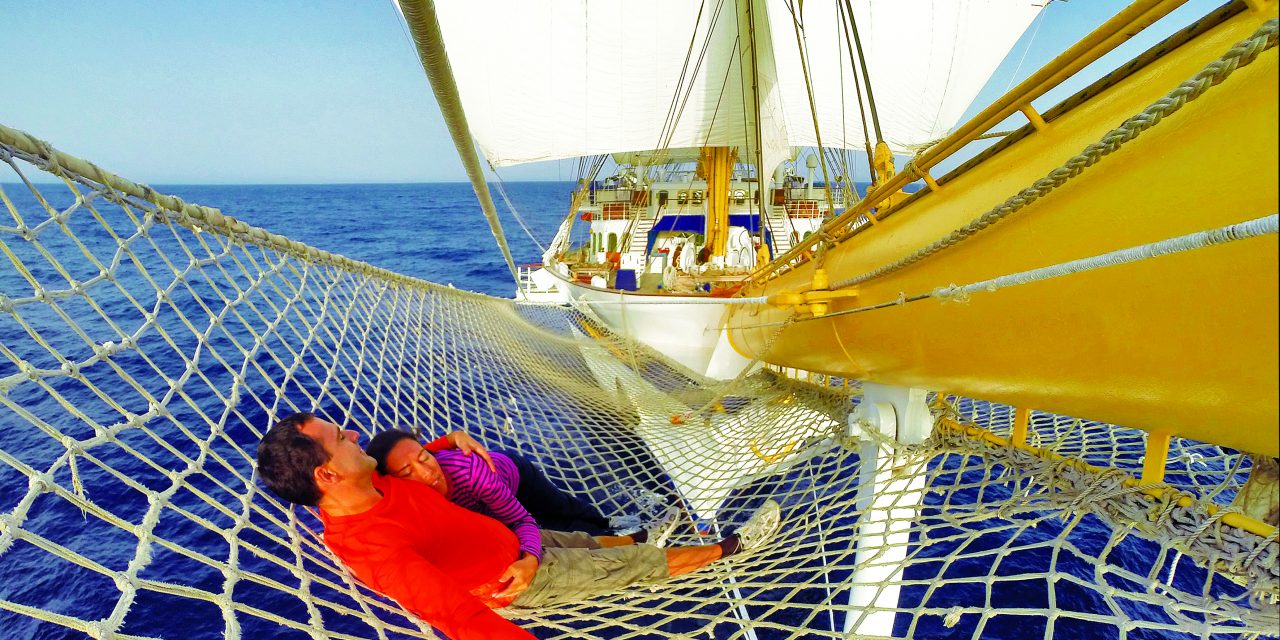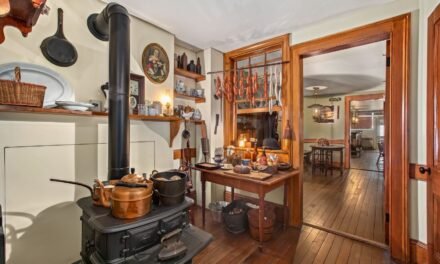
The Romance of Sailing Ships: Cruising Aboard the Star Flyer

I must go down to the seas again, to the lonely sea and the sky,
And all I ask is a tall ship and a star to steer her by;
And the wheel’s kick and the wind’s song and the white sail’s shaking,
And a grey mist on the sea’s face, and a grey dawn breaking. John Masefiel
Once upon a time, during “The Golden Age of Sail,” the oceans belonged to the clipper ships. From the late 16th to the mid-19th century, those graceful and majestic vessels, with their soaring masts and billowing sails, carried goods and people to and from the world’s ports.
Though the oceans today are dominated by megaships of no great beauty, it is still possible to experience the romance and adventure of sailing on a clipper ship—but with comforts unknown to the sailors of centuries past. The tall ships of the specialty line, Star Clippers are as luxurious as private yachts and small enough to visit ports that are unreachable by big cruise ships, and it was on the line’s Star Flyer that I sampled all that was wonderful on a “real” sail.
My warm weather cruise in the Western Mediterranean took me from Barcelona to Cannes, with an itinerary I loved that included calls at Palma, Mahón, Bonifacio, Calivi and St. Tropez.
My first look at the Star Flyer was a true “photo op:” The clipper is picture-postcard beautiful. The welcome aboard was warm and accompanied with champagne. My Category 3 cabin, situated on the Commodore Deck (Deck 1) measured 118 square feet. It was small but attractive, with lots of polished wood and brass with touches of navy blue and a porthole. Though the bathroom was small, there was a generous amount of storage. I had a phone, hair dryer, safe and wall-mounted TV, which broadcast two English channels-which meant that I would be using the DVD player for entertainment. (It was easy to borrow a couple of DVDs every few days from the purser’s large collection.) Laundry service (but no dry cleaning) is available and very reasonably priced compared to the service on most big ships.
As is appropriate for a 170-passenger vessel, all meals are served in the spacious wood-paneled Clipper dining room, which is brightly decorated in blue and gold, with paintings of clipper ships on the walls. Breakfast and lunch, with open dining, were served buffet style, with a chef station for the preparation of eggs in the morning and a regional or themed hot dish at lunch. (Before the dining room opens and after it closes, it’s possible to have a continental breakfast in the Piano Bar, where a hot beverage station available 24 hours.) Dinner was a seated meal, and there were always several options (including steak and pasta) as alternates to the menu choices.
Prior to dinner, the menu is posted in the Tropical Bar, with starters and main courses displayed so that passengers can see what the various dishes will look like. The Tropical Bar is also the setting for the five o’clock “cocktail hour,” when finger sandwiches, fruit, cookies and a warm dish (quiche, chicken fingers, etc.) are served. A midnight snack–a hot dish like meatballs or chicken fingers–is served at the Piano Bar. Though there is no room service, when passengers are not well, food may be brought to them. Coffee, tea and soft drinks were complimentary at meal time. A decent selection of wines at reasonable prices was always available.
The Edwardian Library, a wood-paneled beauty decorated nautically in maroon and gold served multiple purposes: as the excursion desk, as the venue where ports and port activities are discussed when the weather is poor, as well as an inviting retreat for reading, playing board games or using the ship’s two computers. There are charges for internet use; some passengers signed up for temporary service with their phone providers and created personal hotspots on their own computers.
Shore excursions were fairly standard, as was the pricing. Each day the ship’s sports team offers a complimentary activity. In Bonifacio, for example, this was a walk up to the Pertusato lighthouse. At some ports, the crew arranges complimentary watersports. Snorkeling equipment is complimentary and may be checked out for the entire cruise. Daily yoga classes are offered. There are two small pools with windows on the bottom, so passengers in the Piano Bar can check swimmers out while enjoying a cocktail. While there is no theater or big-ship-style entertainment, there are casual activities like games and contests and dancing in the evening. There’s no need to dress up, and with the small number of passengers, the atmosphere is relaxed and convivial. A clipper cruise is the polar opposite of the heavily scheduled experience aboard some big ships. It’s possible to take part in some or all activities, it’s also possible to just relax in understated luxury and just enjoy being on the high seas.
Although the Star Flyer is motorized, the ship’s engines are not employed as long as conditions permit. On a typical cruise the 36,000 square feet of billowing sails are unfurled to catch the wind about 25 to 35 percent of the time. A popular activity each day is standing on deck and watching the clipper leave the port in full sail.
The highlight of a cruise like this is the opportunity to take part in the sailing experience: to lie in the bowsprit net suspended above the rushing sea, to visit the open bridge, learn to tie nautical knots or climb the mast to the Crow’s Nest for a panoramic view. I saw passengers of all ages participate; what they had in common was fitness and mobility and a desire for some adventure.
The sailing experience feels very different from the experience on a mega-ship, where it’s possible to sometimes forget you’re at sea. The rhythm of a sailing ship can be very pleasant and even soothing when the weather and the sea cooperate. In rough seas, however, there can be some pitching, which isn’t really a problem for those who have sailed on small craft or fishing boats. Pills to combat motion sickness are readily available, but many, if not most passengers seem to relish the sense of oceangoing authenticity that a clipper ship provides
As part of Star Clippers’ 25th anniversary celebrations, the line is building the Flying Clipper, modeled after the France II, a famous sailing ship that was launched in1912 and was the biggest sailing vessel ever built at the time. The new Flying Clipper will launch in early 2018 and carry 300 passengers and 140 crew. At 8,770 tons and with 39,288 square feet of sail, it, like the legendary France II, will be the world’s biggest sailing ship—a splendid reminder of the “Golden Age of Sail.”
In addition to the line’s signature Tropical Bar and Piano Bar, the new ship will have a Dive Bar, an alternative evening venue designed to attract younger cruisers. Also new: along with two plunge pools, there will be a scuba diving pool with glass sides, so divers can be observed by passengers below decks. Diving courses will be offered in some venues, either by the ship’s dive master or by local instructors brought on board.
As is the case on the line’s other ships, complimentary water sports will be offered in port; a water sports platform will be lowered.
Passengers who believe that every cruise should include some pampering will be pleased by the presence of a small spa that will offer Thai massage, facials and nail services.
The Flying Clipper will sail the Mediterranean in summer and the Caribbean in winter.





































